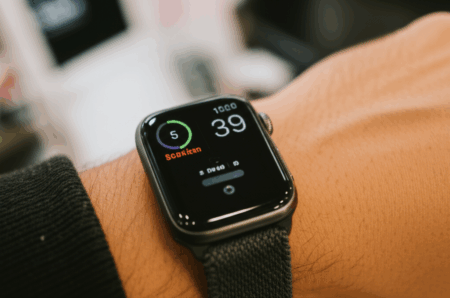The global smart fitness market is on a trajectory of significant expansion, driven by a confluence of rising health awareness and deep integration of technology into personal well-being routines. Projections indicate the market is expected to reach substantial figures, with one report valuing it at USD 33.77 billion by 2032, expanding at a compound annual growth rate (CAGR) of 12.8% from 2025 to 2032. Other analyses project even higher valuations, with some anticipating the market could hit USD 189.11 billion by 2032 at an 11.4% CAGR, or even USD 98.75 billion by 2030 with a CAGR of 25.18%. This burgeoning market encompasses a wide array of technologically advanced products designed to enhance and monitor physical activity, offering users real-time data and personalized exercise experiences.

The Driving Forces Behind Smart Fitness Market Expansion
The impressive growth forecast for the smart fitness market is underpinned by several key factors that are fundamentally reshaping how individuals approach health and exercise.
Increasing Health and Wellness Awareness
A global surge in health consciousness is a primary catalyst for the smart fitness market. Faced with increasing rates of chronic diseases such as obesity, diabetes, and cardiovascular conditions, individuals are actively seeking convenient and accessible solutions to improve their well-being. Governments, health organizations, and influencers actively promote the benefits of regular physical activity and healthy eating habits, further fueling demand for fitness solutions that are convenient, accessible, and effective. This heightened awareness translates into a greater emphasis on preventive healthcare, with consumers eager to adopt tools that help them monitor their health and achieve fitness goals.
Advanced Technological Integration
The relentless pace of technological innovation is a cornerstone of the smart fitness market’s expansion. The integration of cutting-edge technologies like Artificial Intelligence (AI), the Internet of Things (IoT), cloud computing, and advanced sensors is transforming traditional workout routines.
Wearable Technology
Smartwatches and fitness trackers are at the forefront of this technological wave, allowing users to monitor a comprehensive range of metrics including heart rate, steps, distance, calories burned, and sleep patterns. These devices provide real-time feedback and advanced analytics, enabling users to make informed decisions about their fitness routines and optimize their efforts. The market for fitness trackers alone is projected to grow significantly, reaching USD 290.85 billion by 2032 with a CAGR of 22.1% from 2025–2032. Affordable fitness trackers are making wearables accessible across various socioeconomic strata.
Smart Fitness Equipment and Home Gyms
The concept of the home gym has been redefined by smart equipment. Connected cardio machines like treadmills, bikes, and rowers, along with AI-powered strength equipment, offer interactive displays, virtual classes, and real-time performance tracking. Brands like Peloton, Mirror, and Tonal have created devices that combine fitness equipment with interactive displays, allowing users to participate in live or on-demand classes led by professional trainers from the comfort of their homes.
AI-Powered Personalization and Coaching
Artificial intelligence plays a pivotal role in personalizing fitness experiences. AI algorithms analyze user data to provide intelligent insights, generate personalized workout recommendations, and adapt training plans based on individual progress and goals. This level of customization ensures workouts are more effective and enjoyable, leading to better adherence and results. AI coaching is particularly beneficial for those who may not have access to personal trainers.
Smart Fitness Applications
The smart fitness apps market is also experiencing accelerated growth, driven by rising health awareness and increasing smartphone adoption. These apps offer features such as AI-powered personalization, wearable integration, and virtual coaching, transforming fitness into a data-driven, accessible, and engaging experience. The market for smart fitness apps is expected to reach USD 8.0 billion by 2033, growing at a CAGR of 18.4%.

Key Segments and Regional Dynamics
The smart fitness market is segmented by device type, technology, end-user, and distribution channel, with distinct regional trends emerging.
Leading Product Categories
- Smartwatches: This segment dominated the market in 2023 with a revenue share of 56.9% and is anticipated to continue strong growth.
- Fitness Trackers: Expected to hold a significant market share, fitness bands are widely used due to their convenience and real-time data feedback.
- Smart Apparel: This segment is projected to grow at a CAGR of 13.36% due to the development of textile-based sensors and demand for integrated solutions.
Regional Market Insights
- North America: The region is projected to lead the smart fitness market, holding a substantial market share due to the presence of major fitness technology companies, high adoption of wearable devices, and a health-conscious consumer base with high disposable income. The U.S. market, in particular, is a significant contributor, driven by robust tech infrastructure and consumer awareness. Social media platforms and influencers also play a crucial role in promoting fitness culture in North America.
- Asia Pacific: Expected to exhibit the fastest growth, particularly in countries like China, India, and Japan. This growth is fueled by a burgeoning middle class, increased health awareness, remote work trends, smartphone penetration, urbanization, and rising disposable income. Local startups and affordable fitness solutions are also contributing to the region’s rapid expansion.
- Europe: This market is expected to witness significant growth, driven by education and awareness campaigns and a demand for premium fitness devices.

Challenges and Future Outlook
While the smart fitness market is booming, it faces challenges such as concerns regarding data security and privacy due to the collection of highly personal health data. The high cost of advanced smart fitness devices can also be a hinderance.
Despite these challenges, the future of smart fitness is promising. The industry is evolving towards fully integrated smart fitness environments, combining VR/AR workouts with AI-powered nutrition guidance and biometric monitoring. Next-generation wearables are expected to focus on metabolic tracking, real-time glucose monitoring, and neurofeedback for mental performance optimization. The ongoing focus on preventive healthcare, the fusion of health and fitness ecosystems, and the emergence of online fitness communities are all expected to further propel the market forward. As consumers continue to embrace AI technology and connected fitness devices, the smart fitness industry is set to redefine personal wellness and exercise routines on a global scale.







